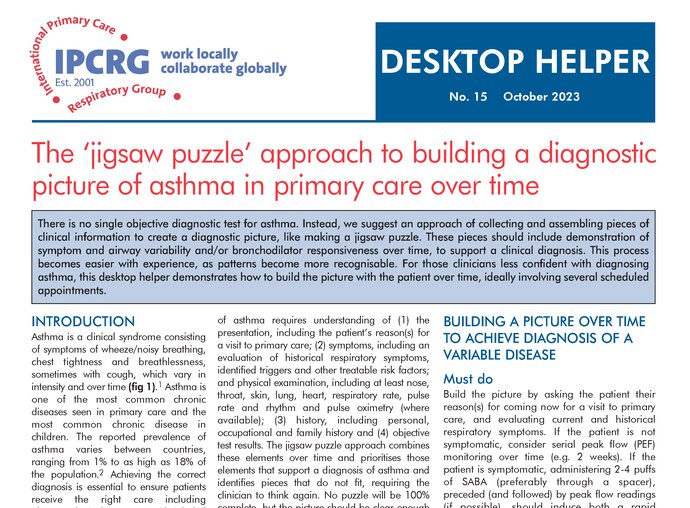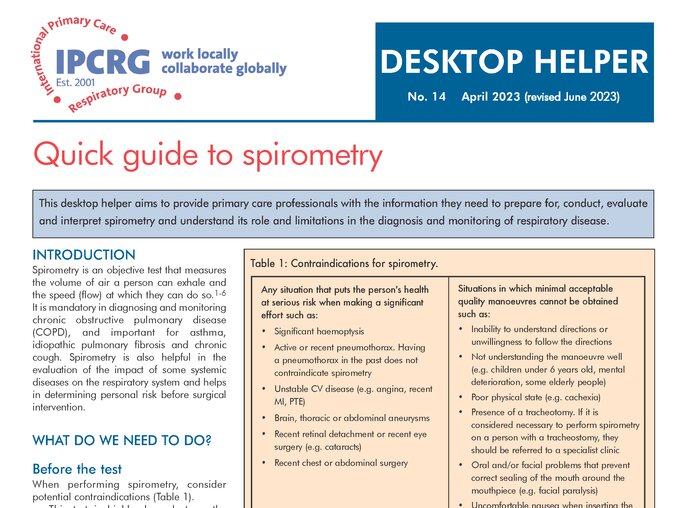Desktop Helper No.2 - A practical guide to improve difficult-to-manage asthma in primary care
This resource is available online and as a PDF. Click the links below to access the two versions of this resource:
Click here for the online version | Click here for the PDF version
Difficult-to-manage asthma occurs either when the person or their clinician finds control and treatment challenging, despite the (apparent) best possible treatment. This leads to the person facing difficulties dealing with some of the following:
- Daytime asthma symptoms, more than twice/week
- Any night awakening due to asthma-related symptoms
- More than two exacerbations per year requiring rescue systemic corticosteroids1
- Frequent use of SABA (≥3 canisters per year or ≥3 times per week)
- Poor control despite prescription of high-dose ICS often in combination with LABA/LAMA or use of OCS1
- Frequent primary care out-of-hours contacts (one or more per month).
ICS Inhaled corticosteroid, SABA short-acting beta-agonist, LABA long-acting beta-agonist, LAMA long-acting muscarinic antagonist, OCS oral corticosteroid
References: available here
Authors: Jaime Correia de Sousa, Dermot Ryan, Garry McDonald, Hanna Sandelowsky, Katarina Stavric, Liam G Heaney, Luís Carvalho, Siân Williams
Reviewers: Steve Moritz, Vibeke Backer
Editor: Ian Wright
Endorsed by European Forum for Research and Education in Allergy and Airway Diseases (EUFOREA)
Funding: This desktop helper was funded from an educational grant from GSK plc. who provided a grant to support the development, typesetting, printing, translation and associated costs but did not contribute to the concept or content of this document.
Date published: April 2024




